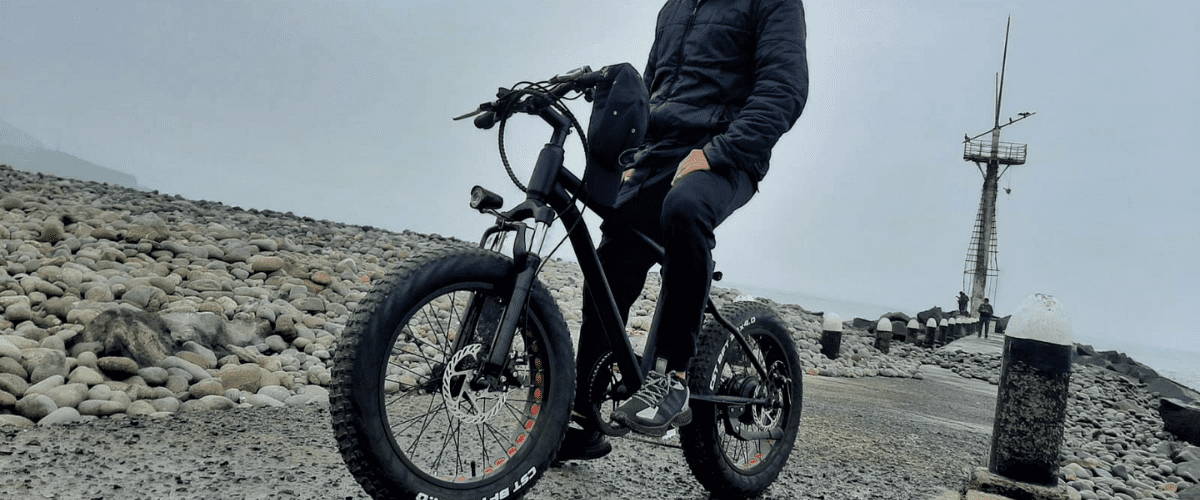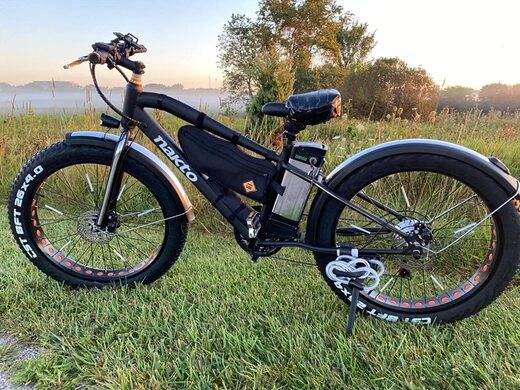
Exploring the Pros and Cons of Fat Tires: A Comprehensive Comparison
Fat tires are typically wide tires used on fat bikes. These tires are not just unnecessarily large. Instead, their size provides a lot of benefits for your bike. Fat bikes are sturdy and can handle several terrain and weather conditions that may be quite challenging for a traditional bike. However, as much as these bikes offer several benefits, they come with their drawbacks.
That is why this article explores the pros and cons of fat tires. We also take a look at how they compare with other types of bikes.
What is a Fat Bike?
A fat bike is a type of bicycle with oversized tires. The size of these tires is typically 3.8 inches (97 mm) or larger and rims 2.6 inches (66 mm) or wider. These tires allow the bike to ride on low-pressure air, which gives it more traction and stability on soft and uneven surfaces, such as snow, sand, mud, and rocks.
Fat bikes are also known as snow bikes, sand bikes, or adventure bikes because they can handle various terrains and weather conditions that are challenging for conventional bikes.
Originally, fat bikes developed in Alaska and New Mexico in the late 1980s and early 1990s. However, they have become more popular and accessible in recent years thanks to technological innovations and increased demand.
Pros of Fat Tires
Fat tires offer several benefits for your bike, including the following;
Enhanced Traction
Fat tires have increased surface area and lower air pressure, which allows them to grip better on loose and slippery surfaces, such as snow, sand, mud, and gravel. Consequently, these tires can roll over obstacles more easily and prevent skidding or sliding.
Improved Stability
Fat tires have more volume and width, which gives them more balance and stability on uneven and rough terrain. This means they can absorb more shocks and vibrations and reduce the impact and stress on the rider and the bike.
Enhanced Comfort
These tires have extra cushioning and flexibility, making them more comfortable to ride on any surface. As a result, they can smooth out bumps and jolts to provide a softer and gentler ride.
Versatility
Fat tires are more adaptable and durable, making them more versatile to use on various terrains and weather conditions. This means that they can handle different challenges and situations, like snow, mud, sand, and rocks, that are typically difficult for conventional tires.
Adventurous
Fat tires are adventurous. You can confidently use them in new and unknown terrain, providing more fun and excitement. Therefore, they enable you to explore and discover new trails and landscapes, offering more thrill and enjoyment.
Improved Floatation
Fat tires have more buoyancy and lift, which allows them to float on soft and deep surfaces, such as snow and sand. This means they can prevent sinking and getting stuck and allow the rider to glide and cruise on these surfaces.
Better Shock Absorption
Fat tires have more elasticity and resilience, which enables them to absorb more shocks and impacts from the road or the trail. Consequently, they can protect you and your bike from damage and injury and provide a safer and smoother ride.

Cons of Fat Tires
Despite their numerous advantages, fat tires also come with their downsides. The cons of fat tires include;
Heavy Weight
Fat tires are much heavier than conventional tires because of the extra rubber, air, and rim material. This adds to the overall weight of the bike, making it harder to pedal and accelerate, especially on smooth and flat surfaces like pavement.
In addition, due to its heavy weight, the bike is more difficult to transport and store, as it takes up more space and requires more effort to lift and carry.
Reduced Speed
Fat tires have more rolling resistance than conventional tires. Therefore, they require more energy and effort to keep the bike moving at a constant speed. This is because the wide tires create more friction and drag with the ground, slowing down the bike.
In addition, the reduced speed makes the bike less efficient and consumes more battery power.
Higher Cost
Fat tires are more expensive than conventional tires because they require special frames, wheels, and components to accommodate the wide tires. These parts are often more rare and harder to find, increasing the price and reducing the options for the bike.
The high cost of fat tires makes the bike more costly to maintain and repair. Fat bikes need more frequent cleaning, checking, and inflating, as well as special tools and equipment.
Limited Maneuverability
Fat tires have less responsiveness and agility than conventional tires because of the low air pressure and high volume of the wide tires. This reduces the bike's ability to turn and corner quickly and smoothly, making it less suitable for tight and technical trails.
This limited maneuverability may make cycling more of a challenge for a rider, which may make your rides less fun and exciting.
Limited Availability
Fat tires are less available than conventional tires because they are not as popular and widespread as other types of tires. Therefore, it may be harder to find and replace fat tires.
In addition, fat bikes are less compatible and adaptable as they cannot switch to other types of tires.

Comparing Fat Bikes to Other Bikes
Comparing fat bikes to other types of bicycles involves looking at their design, intended use, and performance across different terrains. Fat bikes are distinguished by their oversized tires, typically 3.8 inches or wider, mounted on wider rims. These features provide significant advantages and some limitations compared to more traditional bicycles. Here's a breakdown of how fat bikes compare to other bikes:
Terrain Adaptability
- Fat Bikes: Excell in soft, unstable terrains like snow, sand, and mud due to their wide tires that provide more surface area and grip. The low tire pressure allows for a smoother ride over bumpy surfaces.
- Mountain Bikes: Designed for off-road cycling, they feature narrower tires than fat bikes and suspension systems to handle rough trails. While versatile, they may struggle more than fat bikes on very soft or loose surfaces.
- Road Bikes: Have thin tires and are optimized for speed and efficiency on paved roads. They are not suitable for the types of terrain that fat bikes excel in.
Speed and Efficiency
- Fat Bikes: The wider tires result in higher rolling resistance, making them slower and requiring more effort to pedal on hard, smooth surfaces compared to mountain and road bikes.
- Mountain Bikes: Generally faster than fat bikes on trails and rough terrains due to their lighter weight and less rolling resistance.
- Road Bikes: The fastest on paved surfaces because of their lightweight frames, thin tires, and aerodynamic positioning.
Comfort
- Fat Bikes: The large volume tires act as a natural suspension system, absorbing shocks from uneven terrain, which makes for a comfortable ride on rough surfaces.
- Mountain Bikes: Typically equipped with a mechanical suspension to absorb shocks, providing comfort on trails but may feel less comfortable than fat bikes on extremely rough or loose surfaces.
- Road Bikes: Offer the least comfort on rough surfaces due to their stiff frames and high-pressure, narrow tires, but are very comfortable and efficient on smooth roads.
Versatility
- Fat Bikes: Highly versatile in terms of terrain adaptability but less so for speed-focused riding or long-distance efficiency on paved roads.
- Mountain Bikes: Offer a good balance of off-road capability and efficiency on mixed surfaces.
- Road Bikes: Specialized for speed and efficiency on paved roads, making them less versatile for off-road conditions.
Use Cases
- Fat Bikes: Ideal for adventurers looking to explore a variety of terrains, including snow, sand, and trails where other bikes would falter.
- Mountain Bikes: Suitable for riders interested in trail riding and off-road cycling who value speed and agility.
- Road Bikes: Best for cyclists focused on road riding, long-distance endurance, and racing.

Conclusion
Fat bikes and fat tires are unique bicycle types that offer you several advantages. The tires provide more traction, stability, comfort, versatility, adventure, floatation, and shock absorption. However, they also come with their downsides. Fat bikes are bulky, heavy-weight, cost more, and are not readily available on the market.
Nevertheless, when compared with other bikes, fat bikes are more versatile, durable, and stable. Before purchasing a fat bike, consider its intended use, your budget, and the accessories you'd need.
You can get fat bikes, fat tires, and other bike accessories from a reputable seller like us. Feel free to contact us if you have any questions or feedback.

